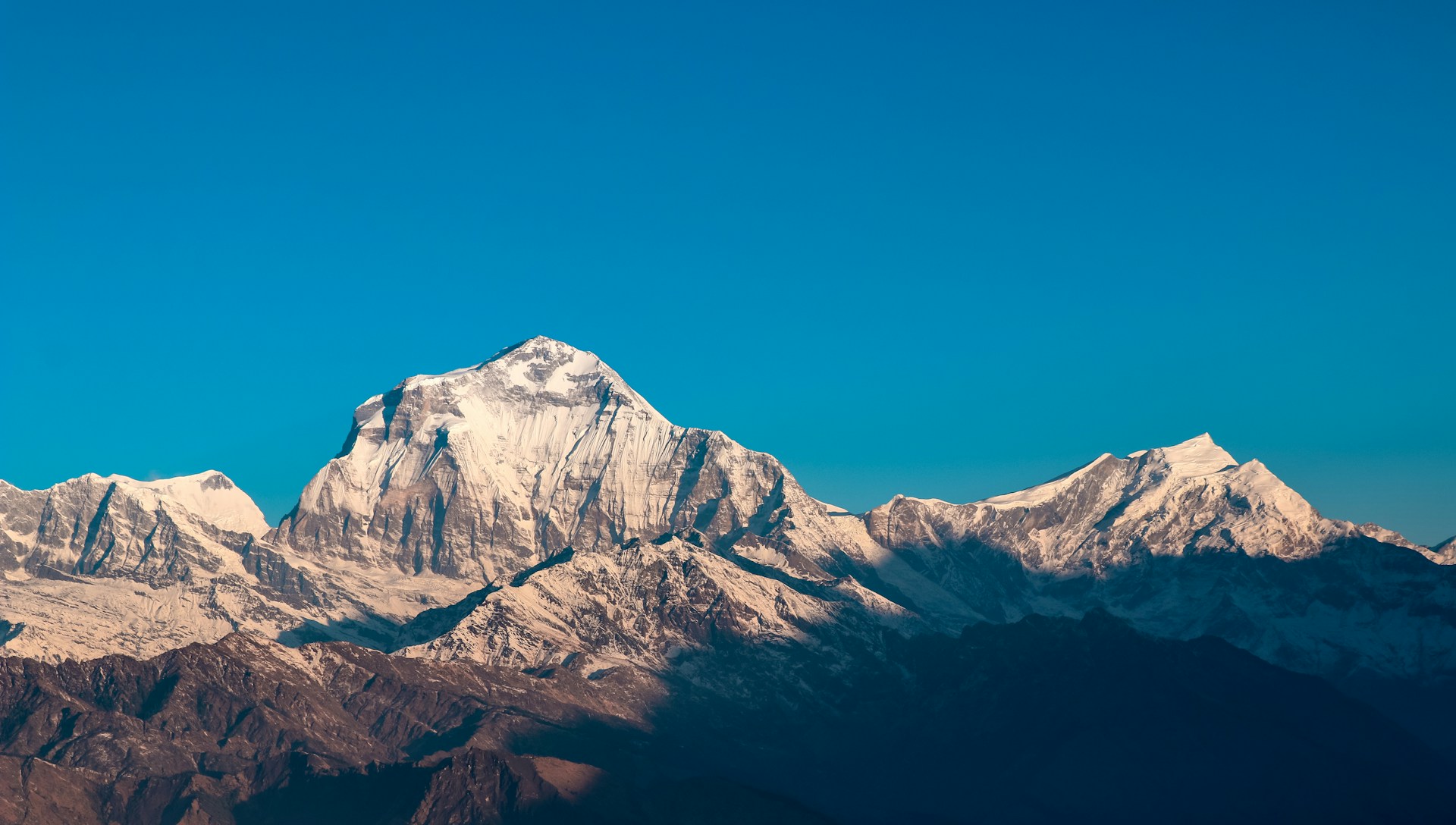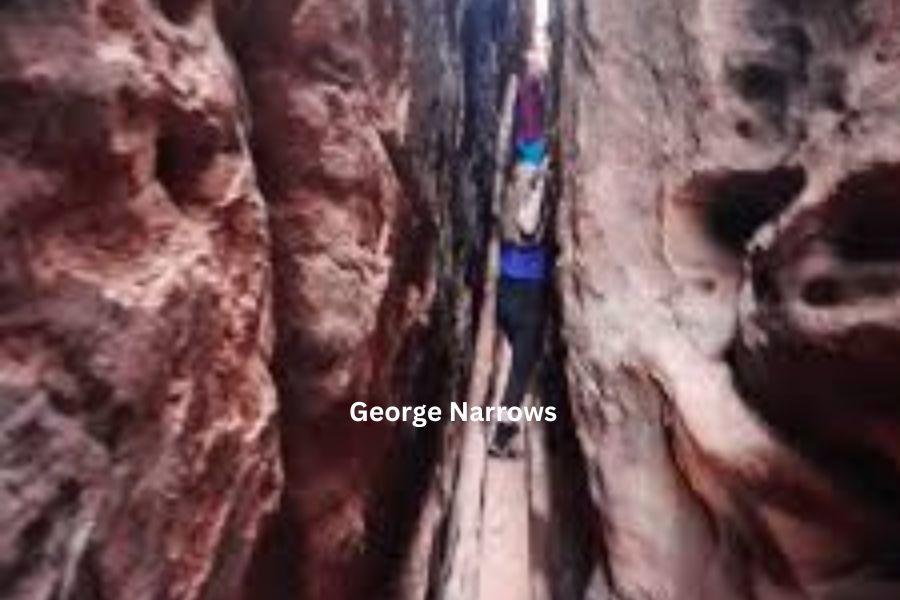The Annapurna Circuit, one of the world’s most celebrated trekking routes, offers an unparalleled adventure through the majestic Himalayas, where the secrets to an unforgettable experience lie in preparation, awareness, and respect for the surroundings. To truly make the most of your trek on this iconic circuit, several key insights and tips can enhance your journey.
First and foremost, acclimatization is essential to ensure a safe and enjoyable trek. The Annapurna Circuit reaches elevations of over 5,400 meters at Thorong La Pass, making it crucial to allow your body time to adjust to the altitude. Incorporate rest days into your itinerary, particularly in places like Manang, to acclimatize gradually. Pay close attention to the symptoms of altitude sickness and take proactive measures such as ascending slowly and staying hydrated. Regular acclimatization practices not only help in preventing altitude sickness but also ensure that you are able to fully appreciate the stunning vistas and diverse landscapes along the circuit.
Packing wisely is another vital component of a successful trek. Layered clothing is crucial, as temperatures can vary significantly between the lower valleys and the higher altitudes. Include a high-quality down jacket, thermal layers, and waterproof gear to manage the range of weather conditions you might encounter. Good trekking boots, a reliable sleeping bag, and trekking poles are also indispensable. Remember to pack light but include essentials such as a first-aid kit, water purification tablets, and a multi-purpose knife.
Understanding the local culture and engaging with the communities you encounter adds a rich dimension to your trek. The Annapurna Circuit with Thorong La Pass passes through numerous villages with distinct ethnic communities, including the Gurung, Magar, and Tibetan-influenced groups. Showing respect for local customs, such as asking permission before taking photographs and dressing modestly, fosters positive interactions and enriches your cultural experience. Participating in local festivals or visiting monasteries can offer deeper insights into the traditions and way of life in these high-altitude communities.
Navigating the weather and planning your trek during the best seasons are also key to maximizing your experience. Spring (March to May) and autumn (September to November) are ideal times to undertake the circuit, offering stable weather and clear views. Be prepared for sudden weather changes and plan your daily hiking schedule to avoid trekking in the dark or during adverse weather conditions.
Lastly, adopting a responsible trekking approach helps preserve the natural beauty of the circuit. Adhere to the principle of ‘Leave No Trace’ by packing out all waste and minimizing your environmental impact. Supporting local businesses by purchasing goods and services from village shops and lodges also contributes positively to the local economy.
By embracing these tips and preparing thoughtfully, trekkers can unlock the full potential of their Annapurna Circuit adventure, enjoying not only the breathtaking landscapes but also the profound cultural experiences that make this trek truly exceptional.
Introduction to the Annapurna Circuit
The Annapurna Circuit is a legendary trekking route located in the Himalayas of Nepal, renowned for its diverse landscapes and cultural richness. Stretching approximately 160 to 230 kilometers, depending on the specific route taken, this circuit encircles the Annapurna Massif, offering trekkers a journey through varied terrains ranging from lush subtropical forests to stark, high-altitude deserts. Starting from Besisahar in the lower subtropical region, the trek ascends through terraced fields and traditional villages, eventually reaching the Thorong La Pass at an altitude of 5,416 meters—the highest point on the circuit. The route provides stunning views of some of the world’s highest peaks, including Annapurna I and Dhaulagiri, and traverses through several distinct climatic zones. Along the way, trekkers experience the unique cultural traditions of the Gurung, Magar, and Tibetan-influenced communities. The Annapurna Circuit is celebrated not only for its spectacular natural beauty but also for the opportunity to immerse oneself in the local culture and witness the diverse ecosystems that change with the altitude. This trek combines adventure with cultural exploration, making it a quintessential journey for those seeking both physical challenge and rich cultural encounters.
Best Time to Trek the Annapurna Circuit
The best time to trek the Annapurna Circuit is during the spring (March to May) and autumn (September to November) seasons. These periods offer the most favorable weather conditions for trekking, characterized by stable temperatures and clear skies. Spring, with its blooming rhododendrons and other wildflowers, enhances the visual appeal of the landscape, making it particularly attractive for trekkers. The temperatures during this season are moderate, ranging from mild in the lower elevations to chilly at higher altitudes. Autumn, on the other hand, provides crisp weather and stunning panoramic views of the Himalayas. The clear skies and relatively dry conditions during this time make it ideal for photography and unobstructed trekking. Both seasons avoid the extreme cold of winter and the heavy rainfall of the monsoon, which can make trails slippery and challenging. Trekking outside these periods, such as in summer (June to August) or winter (December to February), presents additional challenges. The monsoon season brings heavy rains and increased risk of landslides, while winter’s snow and freezing temperatures can make high-altitude trekking difficult. Planning your trek during spring or autumn ensures optimal conditions for a safe and enjoyable adventure on the Annapurna Circuit.
Preparation and Packing Essentials
Proper preparation and packing are crucial for a successful trek on the Annapurna Circuit, given the range of conditions trekkers will face. Start by packing layered clothing to adapt to varying temperatures throughout the trek. Essential layers include a moisture-wicking base layer, an insulating mid-layer such as a fleece, and a waterproof and windproof outer layer. A high-quality down jacket is important for cold nights at high altitudes. Sturdy, well-broken-in trekking boots with good ankle support are vital for navigating uneven terrain and preventing injuries. Trekking poles are also recommended to aid balance and reduce strain on the knees, especially during steep ascents and descents. Additionally, a reliable sleeping bag rated for sub-zero temperatures is necessary for comfort in high-altitude lodges. Essential items include a first-aid kit, water purification tablets, and a multi-tool or knife. A lightweight, durable backpack should comfortably carry these essentials, along with extra snacks, a camera, and necessary personal items. Ensure you have adequate sun protection, including sunglasses with UV protection, a wide-brimmed hat, and sunscreen. Portable power banks can help keep your electronics charged, especially in remote areas where power sources may be limited. Properly preparing and packing these essentials will contribute to a safe and enjoyable trekking experience on the Annapurna Circuit.
Understanding the Annapurna Circuit Route
The Annapurna Circuit route is a comprehensive journey that takes trekkers through a diverse array of landscapes and cultural regions, starting from the subtropical lowlands and ascending to high-altitude desert terrain. The trek typically begins in Besisahar, a town that serves as the gateway to the circuit. From here, trekkers follow a well-trodden path through various villages, including Bahundanda, Chame, and Pisang, which offer picturesque views and opportunities to acclimatize. The route gradually ascends to Manang, a key stop for acclimatization where trekkers can rest and explore the local Tibetan-influenced culture. The trek continues toward the challenging Thorong La Pass, the highest point at 5,416 meters. The ascent to this pass is demanding, requiring careful acclimatization and preparation. After crossing the pass, trekkers descend through the Mustang region, known for its unique desert-like landscape, and reach Muktinath, a sacred pilgrimage site. The final part of the trek takes trekkers through the Kali Gandaki Gorge, one of the deepest gorges in the world, before concluding in Jomsom, where transportation options are available for return to Pokhara or Kathmandu. The circuit’s route is designed to offer a comprehensive trekking experience, showcasing the rich variety of natural and cultural elements that make the Annapurna region so extraordinary.
Acclimatization and Health Tips
Acclimatization is critical for a successful and enjoyable trek on the Annapurna Circuit due to the significant altitude changes along the route. Proper acclimatization helps prevent altitude sickness, which can occur when the body struggles to adjust to reduced oxygen levels at higher elevations. To acclimatize effectively, it’s important to ascend slowly and include rest days at key points, such as Manang, where trekkers can spend an extra day to adjust to the altitude before continuing. A general rule of thumb is to avoid gaining more than 300-500 meters of altitude per day and to include a rest day for every 3-4 days of trekking. Staying well-hydrated is crucial; drink plenty of water and avoid alcohol, which can exacerbate symptoms of altitude sickness. Eating a high-carbohydrate diet helps maintain energy levels and supports acclimatization. Be vigilant for symptoms of altitude sickness, which include headaches, nausea, dizziness, and shortness of breath. If these symptoms occur, it’s essential to descend to a lower altitude immediately and seek medical attention if necessary. Trekking with a guide or in a group can provide additional support and ensure that appropriate measures are taken if altitude sickness arises. Following these acclimatization and health tips will help trekkers navigate the challenges of high-altitude trekking and enhance their overall experience on the Annapurna Circuit.
Navigating Permits and Regulations
Navigating permits and regulations is an essential part of preparing for the Annapurna Circuit trek, ensuring compliance with local guidelines and contributing to the preservation of this pristine environment. To trek the Annapurna Circuit, trekkers need to obtain a few specific permits. The primary permit required is the Annapurna Conservation Area Permit (ACAP), which helps fund conservation efforts and supports local communities. This permit can be obtained in Kathmandu or Pokhara, with a fee that varies depending on nationality. Additionally, trekkers must acquire the Trekker’s Information Management System (TIMS) card, which helps with trekker safety and management. The TIMS card is also available in Kathmandu or Pokhara and involves a nominal fee. Both permits are checked at various checkpoints along the trek, including at the entrance to the Annapurna Conservation Area and at several villages. It’s crucial to carry these permits at all times and present them when requested by authorities. Regulations also require trekkers to adhere to the principles of responsible tourism, such as minimizing waste and respecting local customs. Ensuring that all necessary permits are secured and understanding the regulatory requirements help facilitate a smoother and more enjoyable trekking experience on the Annapurna Circuit.
Recommended Gear for the Trek
Selecting the right gear is critical for a successful trek on the Annapurna Circuit, given the diverse weather conditions and challenging terrain encountered. Start with high-quality, moisture-wicking base layers to keep dry and comfortable in varying temperatures. An insulating mid-layer, such as a fleece or lightweight down jacket, provides warmth in colder conditions, while a waterproof and windproof outer layer is essential for protection against rain and wind. Sturdy trekking boots with good ankle support and a reliable grip are crucial for traversing uneven trails and rocky paths. Trekking poles can offer stability and reduce strain on the knees, especially during steep descents. Additionally, a well-fitting backpack with ample capacity and comfortable straps is necessary for carrying your gear. A high-quality sleeping bag rated for sub-zero temperatures ensures warmth at high altitudes, and a lightweight tent can be useful if opting for tented camp accommodations. Don’t forget essentials like a first-aid kit, water purification tablets, and a multi-tool. Also, consider packing a headlamp with extra batteries, a camera for capturing the stunning scenery, and portable power banks to keep your electronics charged. Investing in appropriate gear enhances comfort, safety, and overall enjoyment of the Annapurna Circuit trek.
Accommodation Options Along the Circuit
Accommodation options along the Annapurna Circuit Hike cater to a range of preferences and budgets, from basic lodges to more comfortable tea houses and tented camps. Tea houses are the most common and provide a blend of basic amenities and local hospitality. These lodges offer a place to sleep, meals, and sometimes communal areas for relaxation and socializing. The standard of tea houses varies, with more established ones in popular areas such as Manang and Muktinath offering relatively better facilities. For those seeking a more adventurous experience, tented camps are an alternative, providing a unique way to experience the trek. These camps can be pre-arranged through trekking agencies and offer a more immersive experience in nature. While they may not provide the same level of comfort as tea houses, they offer a chance to stay in more remote locations where lodges are not available. In peak trekking seasons, accommodation can become crowded, so booking in advance or arriving early in the day is advisable. Regardless of the choice, most accommodations along the circuit offer stunning views of the surrounding mountains, contributing to the overall trekking experience. Ensuring a comfortable and well-located place to stay each night is key to enjoying the journey on the Annapurna Circuit.
Local Cuisine and Dining Tips
Exploring local cuisine is a highlight of trekking the Annapurna Circuit, offering a unique opportunity to experience the flavors of Nepalese and Tibetan food. In tea houses and lodges along the trek, you’ll find a variety of dishes that cater to different tastes and dietary needs. The staple meal is dal bhat, a traditional Nepalese dish consisting of lentil soup served with rice, vegetables, and sometimes meat. This meal is both nutritious and filling, providing essential energy for the physically demanding trek. Other popular dishes include momos (dumplings), which come with various fillings such as vegetables or meat, and noodle soups like thukpa, which offer warmth and comfort at higher altitudes. For those seeking something familiar, many tea houses also offer Western options such as pasta and pancakes. Dining tips include drinking plenty of water to stay hydrated and eating a balanced diet to maintain energy levels. Be cautious with raw vegetables and fruits, as they might not always be thoroughly washed. Additionally, in higher altitudes, where fresh ingredients may be limited, the menu might be more basic. Opting for cooked food is generally safer. Embracing local cuisine not only enhances the trekking experience but also supports local businesses and communities along the Annapurna Circuit.
Cultural Insights and Interactions
Cultural insights and interactions are integral to the Annapurna Circuit experience, providing trekkers with a deeper understanding of the diverse communities along the route. As the trek progresses, you will pass through villages inhabited by various ethnic groups, including the Gurung, Magar, and Tibetan-influenced Manangi people. Each community has its own unique customs, traditions, and ways of life, enriching the trekking experience with vibrant cultural encounters. Engaging respectfully with local residents, such as learning a few words of the local language or participating in traditional ceremonies, enhances these interactions. It’s important to approach cultural sites, such as monasteries and religious festivals, with sensitivity and respect. For instance, always ask for permission before photographing people, particularly in sacred or private settings. Dress modestly, especially when visiting religious sites, and be mindful of local customs and etiquette. Sharing meals with local families or participating in traditional activities can provide meaningful insights into their daily lives and beliefs. Additionally, supporting local businesses by purchasing handicrafts or staying in village lodges helps contribute to the local economy and fosters positive cultural exchanges. By embracing these cultural interactions and respecting local practices, trekkers can gain a richer, more immersive experience on the Annapurna Circuit.
Safety Tips for Trekking
Safety is a top priority when trekking the Annapurna Circuit due to the challenges presented by high altitudes, rugged terrain, and variable weather conditions. One of the most critical aspects of safety is acclimatization. To reduce the risk of altitude sickness, it’s essential to ascend slowly, include rest days, and avoid rapid gains in altitude. Monitoring your health closely is vital; symptoms such as headaches, nausea, and dizziness should be addressed promptly by descending to a lower altitude and seeking medical advice if necessary. Proper preparation also involves carrying a well-stocked first-aid kit, including medications for altitude sickness, gastrointestinal issues, and pain relief. Trekking with a guide or in a group provides an added layer of safety, as guides are trained in emergency procedures and can offer immediate assistance. Additionally, always inform someone of your trekking plans and expected return time. In case of an emergency, having a fully charged mobile phone or a satellite phone ensures you can reach help if needed. Weather conditions can change rapidly in the Himalayas, so staying informed about the forecast and being prepared for sudden weather changes is crucial. Adhering to trail safety guidelines, such as staying on marked paths and using trekking poles to maintain balance, will help prevent accidents. By prioritizing these safety measures, trekkers can ensure a secure and enjoyable journey on the Annapurna Circuit.
Environmental Considerations
Protecting the environment is a key responsibility for trekkers on the Trek to Annapurna Circuit, given its delicate ecosystems and pristine landscapes. Adopting the “Leave No Trace” principles is essential to minimize your impact on the environment. This involves packing out all waste, including biodegradable items, and using designated waste disposal facilities where available. Avoid picking plants or disturbing wildlife, as this can disrupt local habitats and biodiversity. Using biodegradable soaps and minimizing the use of water helps preserve the natural water sources along the trek. Stick to established trails to prevent soil erosion and damage to vegetation. Additionally, respecting local regulations regarding camping and fires is crucial to maintaining the area’s environmental integrity. In higher altitude regions, where resources are scarce, conserving energy and water becomes even more important. Supporting eco-friendly lodges that practice sustainable waste management and conservation efforts also contributes positively. By being mindful of your environmental footprint and making efforts to protect the natural beauty of the Annapurna Circuit, you can help ensure that this extraordinary trekking destination remains preserved for future generations.
Photography Tips for Capturing the Journey
Capturing the beauty of the Annapurna Circuit through photography requires some thoughtful planning and technique to truly reflect the stunning landscapes and cultural moments. Start by planning your shots around the best times of day for natural lighting—early morning and late afternoon provide the most dramatic and soft light, known as the golden hours. Use a sturdy tripod to stabilize your camera and achieve clear, sharp images, especially in low light conditions. When photographing landscapes, compose your shots with foreground elements to add depth and context to the vast scenery. The Himalayan backdrop, including snow-capped peaks and rolling valleys, offers incredible opportunities for wide-angle shots. For cultural photography, approach subjects with respect and seek permission before taking photos, particularly in religious or private settings. Capture candid moments that reflect daily life, traditions, and interactions with locals. Use a polarizing filter to reduce glare and enhance the colors of the sky and landscape. Be prepared for changing weather conditions, and protect your equipment with waterproof covers or bags. Lastly, take time to immerse yourself in the environment and experiences, allowing you to capture the essence of your journey authentically. By combining technical skills with a respectful approach to the subjects, you can create a compelling photographic record of your Annapurna Circuit adventure.
Post-Trek Reflections and Experiences
Post-trek reflections on the Annapurna Circuit Expedition offer an opportunity to process and appreciate the experiences gained during the journey. After completing the trek, many trekkers find it rewarding to reflect on the physical and emotional challenges overcome, as well as the breathtaking landscapes and cultural interactions encountered along the way. Writing in a journal or sharing stories with fellow trekkers can be a meaningful way to capture and articulate these experiences. Reflecting on personal growth, the sense of accomplishment, and the profound connection with nature and local cultures provides a deeper understanding of the trek’s impact. Recalling specific moments, such as reaching the Thorong La Pass, interacting with local villagers, or witnessing the diverse flora and fauna, helps in cherishing the memories. Additionally, reviewing photographs and videos taken during the trek can serve as a visual reminder of the adventure. Many trekkers also use this time to consider the broader implications of their journey, including the importance of responsible trekking and environmental stewardship. Sharing experiences and insights with others who are planning to trek or supporting the local communities through charitable efforts can extend the positive impact of the adventure. Overall, post-trek reflections enrich the trekking experience and contribute to a deeper appreciation of the Annapurna Circuit journey.
Conclusion and Final Thoughts
The Annapurna Circuit stands as one of the world’s premier trekking routes, offering a unique blend of breathtaking natural scenery, rich cultural experiences, and personal challenges. Completing the trek is not just a physical accomplishment but also an opportunity for profound personal growth and reflection. From the lush subtropical forests of the lower elevations to the stark, high-altitude desert near Thorong La Pass, the circuit reveals a diverse array of landscapes that captivate and inspire. The interactions with local communities and the experience of their customs and traditions add layers of cultural richness to the journey. Embracing responsible trekking practices, ensuring safety, and protecting the environment contribute to a more sustainable and rewarding adventure. As trekkers look back on their experiences, the memories of the stunning vistas, the camaraderie with fellow travelers, and the sense of achievement will remain vivid and cherished. The Annapurna Circuit not only challenges trekkers physically but also offers moments of introspection and connection with nature. For many, it becomes a transformative journey that extends beyond the trek itself, influencing their perspectives and leaving a lasting impression. Concluding the Annapurna Circuit trek, with its unique blend of challenges and rewards, marks the end of one adventure and the beginning of a deeper appreciation for the beauty and complexity of the world.











